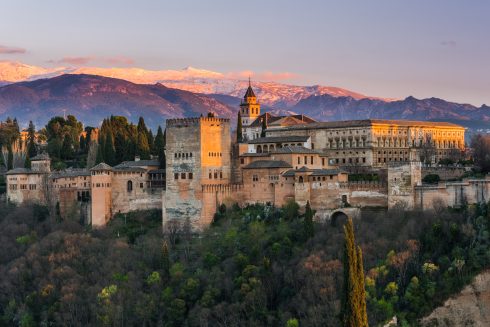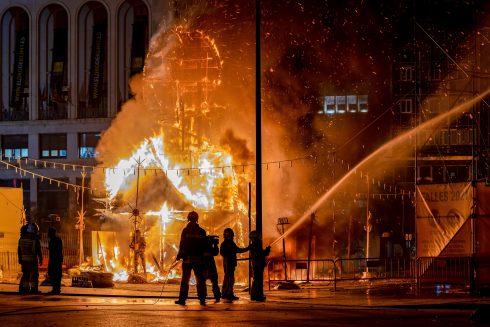A 100-year-old train station has been turned into an award-winning hotel in Spain that is praised by international media and defined as a ‘must visit’ destination.
It took over 70 years for Aragon to connect the French and Spanish pyrenees via train.
The line, which goes through Somport, was first thought up in 1853 but would not open until 1928.
It was inaugurated to much pomp and circumstance by King Alfonso XIII and President of the French Republic, Gaston Doumergue.
Canfranc International Train Station was immediately recognised as an ‘engineering marvel’ and ‘icon of European rail travel’.
READ MORE: This green ‘paradise’ has been named the best rural destination in Spain for 2024
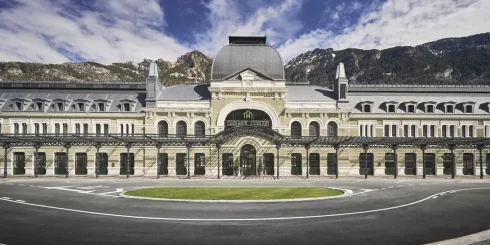
Photo: Barcelo
Despite closing operations to France in 1970, the station remains, just in the form of a hotel.
The luxury accommodation was opened by the Barcelo Group in 2023, with 104 rooms, a restaurant (eventually there will be three), a conference centre, library, spa and gym.
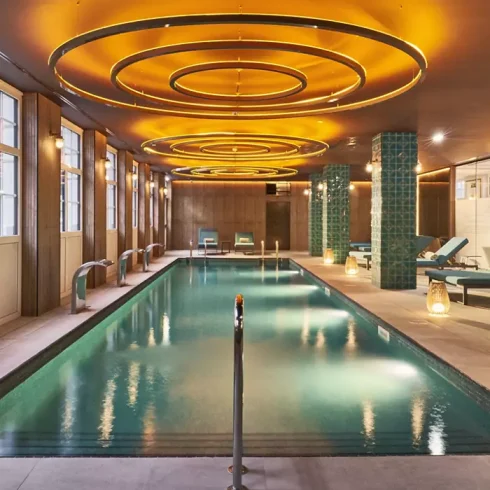
Photo: Barcelo
Not forgetting its long history, the hotel retains its original facade and has decoration inspired by the 1920s, in an ode to the station’s first decade.
As well as the hotel, there is a small railway museum and large public gardens on the site.
It was named ‘Spain’s Best Outdoor Escape Hotel 2024’ by National Geographic for its fusion of history and nature.
Set in the heart of the Aragon Pyrenees, the five-star hotel offers guests a carefully designed experience, promising to transport them to rail travel’s golden age.
READ MORE: Five stunning National Parks in Spain that come alive in the spring
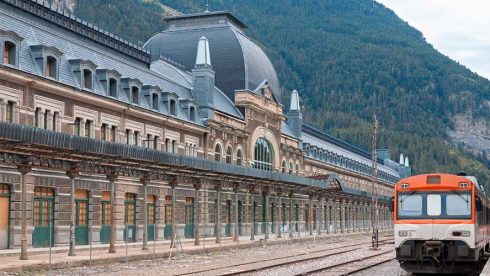
Photo: Barcelo
It has also been praised by the Financial Times, who described it as the ‘Titanic of the Mountains’ for its ‘beautiful’ surroundings at a ‘reasonable price’.
Once the second largest station in Europe, the hotel now serves as a relaxing spot for skiers spending the winter in the Pyrenees.
Some ten times larger than St Pancras station set against stunning mountains, the hotel could be mistaken for Wes Anderson’s ‘Grand Budapest Hotel’, write The Times.
Another British paper also praised the venue, with the Daily Mail writing the hotel is like a ‘living museum’, alive with the buzz of spa goers, cocktail drinkers and keen holidaymakers.
Even the staff wear the same uniforms as the original railway workers and there are photos of the old station everywhere you look.
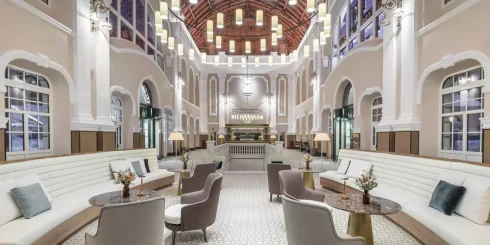
Photo: Barcelo
The hotel’s history is fascinating, says hotel director, Maria Bellosta: “During the Second World War, it played an important strategic role as a point of transit for both refugees and spies.
“It’s a fascinating story.”
Between 1942-1945, the station saw the Nazi gold train, the SS, the Gestapo, fleeing jews and Germans.
During the Spanish Civil War, the station was closed to avoid an invasion from France.
Then it was revitalised between 1942-1943, when a supposedly ‘neutral’ Spain, gave passage to some 86 tonnes of gold robbed by the Nazis from jews per month.
Under German control, the station and nearby town played host to SS and Gestapo officials.
Franco also sent many tonnes of tungsten to the Germans, a crucial element of arms production.
Given its dramatic history, the station has also attracted the attention of many filmmakers, writers and documentary makers.
READ MORE: ‘I took the ferry from Spain to Morocco to explore the North African country- these are my top tips’

Photo: Booket
Its filmography includes ‘The Woods Know’, a 2011 film which tells the tale a Nazi gold heist.
The station has also inspired many books, including: ‘Returning to Canfranc’ (2015), ‘The Sky Above Canfranc’ (2022) and ‘The Wild Border’ (2015).
For documentary lovers, ‘Last Spot, Canfranc’ (2016) is worth a watch.
The hotel conserves this historic legacy from the moment you walk in, with original flooring and stairs in the lobby.
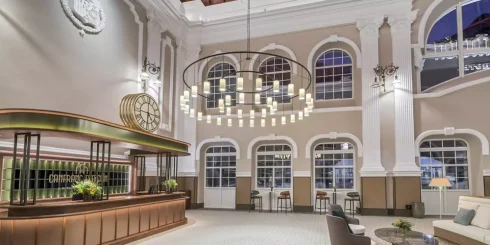
Photo: Barcelo
In the bedrooms, wood and velvet cover the surfaces in art deco fashion, giving the hotel a decadent feel.
Not just great for winter skiers, Canfranc is ideally located for walking, biking and rafting the Pyrenees.
Visitors can also book various cultural activities such as theatre trips, an outing to Juncaral ecopark or local military museum, Ciudadela de Jaca.
History buffs will love a visit to the ‘Line P’ bunkers, a defensive structure built into the mountains between 1944-59 over fears of invasion via the South of France.
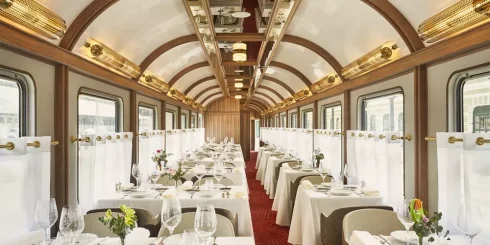
Photo: Barcelo
In the restaurant, located in an old train carriage, chef Eduardo Salanova combines traditional Aragonese food with avant garde techniques, earning the venue its first Michelin star.


